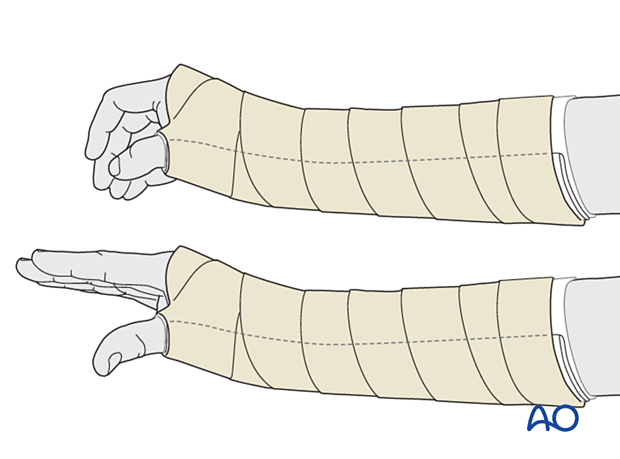Closed reduction - Splinting (preliminary treatment)
1. General considerations
Closed reduction precedes operative treatment and has the following benefits:
- Reducing the risk of median nerve injury
- Restoration of carpal alignment
- Pain relief
- Facilitating surgical repair
After emergency reduction, the wrist is immobilized in a palmar plaster splint in the neutral position. For further stability, the proximal phalanx of the thumb can be included in a position of slight opposition (“scaphoid splint”).
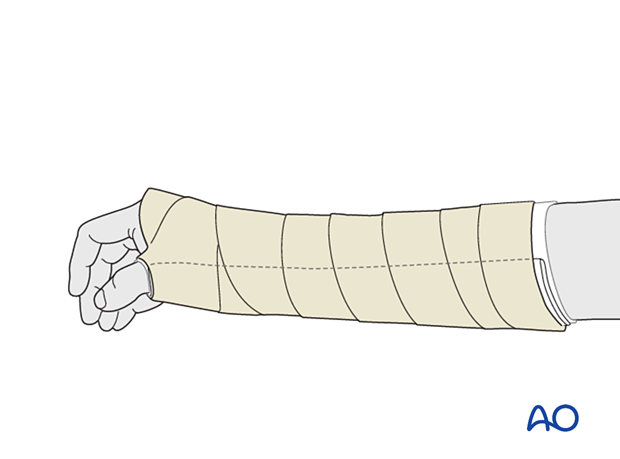
2. Closed reduction of the midcarpal joint
The displaced carpus is reduced by distracting and slightly extending the wrist and then applying direct digital pressure over the carpus from dorsal to palmar while splinting the lunate with the opposing thumb.
The wrist is then flexed slightly. The reduction is felt as the carpus relocates around the lunate. The distraction is then released.
Confirm the carpal relocation with an image intensifier.
If closed reduction is not successful, open reduction via a dorsal approach is necessary as soon as possible (due to the risk of median nerve compromise, and pain).
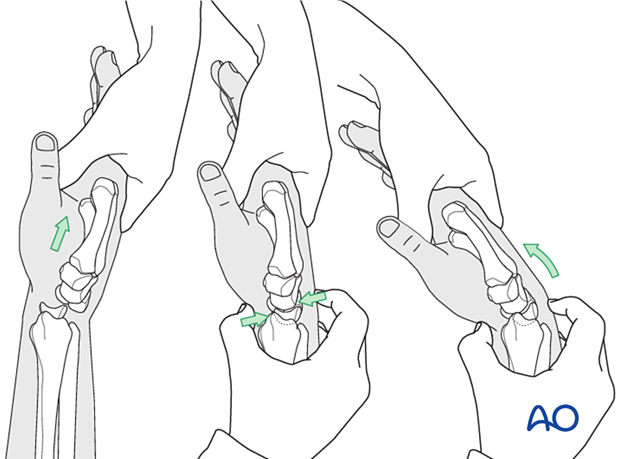
3. Splint application
Padding
Pad the arm and hand to avoid pressure sores, especially on the distal ulna and styloid process of the radius.
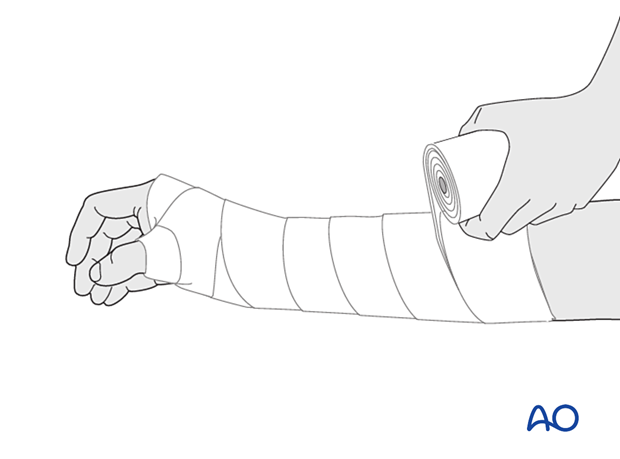
Plaster application
Apply a plaster splint in a standard manner.
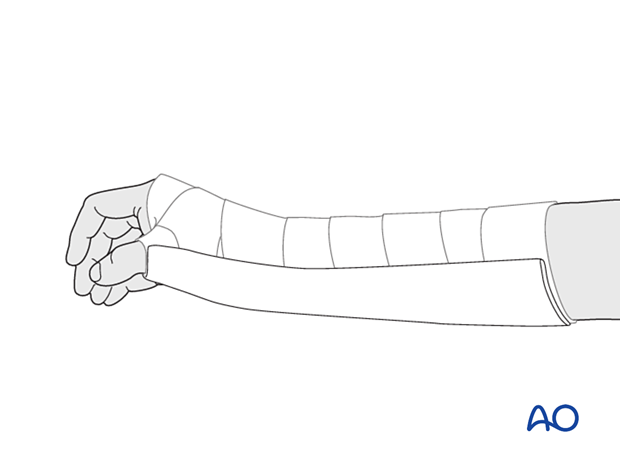
Add elastic bandage to hold the splint in position.
Make sure that the splint and bandage do not extend too far distally, both at the levels of the metacarpophalangeal (MCP) joints of the fingers and the interphalangeal joint of the thumb. The splint must allow complete movement of these joints.
